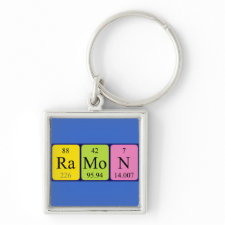
Authors: García-Mutio D, Gómez-Caballero A, Gotiandia A, Larrauri I, Aránzazu Goicolea M, Barrio RJ
Article Title: Controlled grafting of molecularly imprinted films on gold microelectrodes using a self-assembled thiol iniferter.
Publication date: 2018
Journal: Electrochimica Acta
Volume: 279
Page numbers: 57-65.
DOI: 10.1016/j.electacta.2018.05.075
Alternative URL: http://www.sciencedirect.com/science/article/pii/S0013468618311083
Abstract: Herein, a straightforward approach for the controlled coating of gold microelectrodes with molecularly imprinted polymer (MIP) thin films is presented. To this end, a new iniferter has been synthesised, 3-mercaptopropyl diethylcarbamodithioate, which contains terminal thiol groups capable of forming self-assembled monolayers (SAM) on gold substrates. The iniferter SAM was activated under UV radiation after the immersion of the microelectrode in the polymerisation solution, containing 4-ethylphenol (4EP) as template and 4-vinylpyridine and ethylene dimethacrylate as functional monomer and cross-linker respectively. The voltammetric behaviour of the resulting MIP-coated microsensor was assessed next, finding that electrochemical response was linear to the concentration of the target analyte (4EP) in a range comprised between 10-6 and 10-3 mol L-1, showing a sensitivity of 1.02 ± 0.02 (nA L μmol-1) (R2: 0.9983). Measurement repeatability was also evaluated performing a series of measurements with the same sensor at two concentrations levels of 4EP, 5 x 10-6 mol L-1 and 10-4 mol L-1, obtaining relative standard deviations (RSD) of 3.41% and 1.92% respectively. Similarly, sensor-to-sensor repeatability was also determined obtaining RSD values of 10.02% and 16.97% respectively. Sensor selectivity was finally studied comparing the peak current intensity of 4EP with current intensities registered with structural analogues. It was found that sensor was capable of discriminating the target compound from structural analogues presenting remarkable selectivity, even for almost identical compounds such as 4-vinylphenol
Template and target information: 4-ethylphenol, 4EP
Author keywords: molecularly imprinted polymer, iniferter, Living polymerisation, self-assembled monolayer, sensor



Join the Society for Molecular Imprinting

New items RSS feed
Sign-up for e-mail updates:
Choose between receiving an occasional newsletter or more frequent e-mail alerts.
Click here to go to the sign-up page.
Is your name elemental or peptidic? Enter your name and find out by clicking either of the buttons below!
Other products you may like:
 MIPdatabase
MIPdatabase









